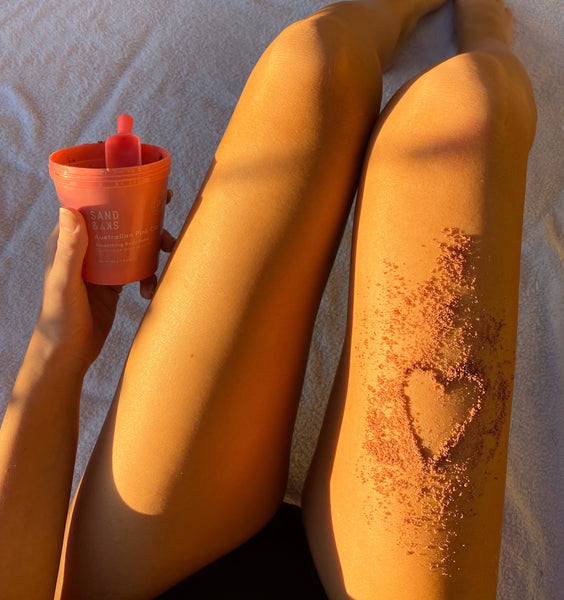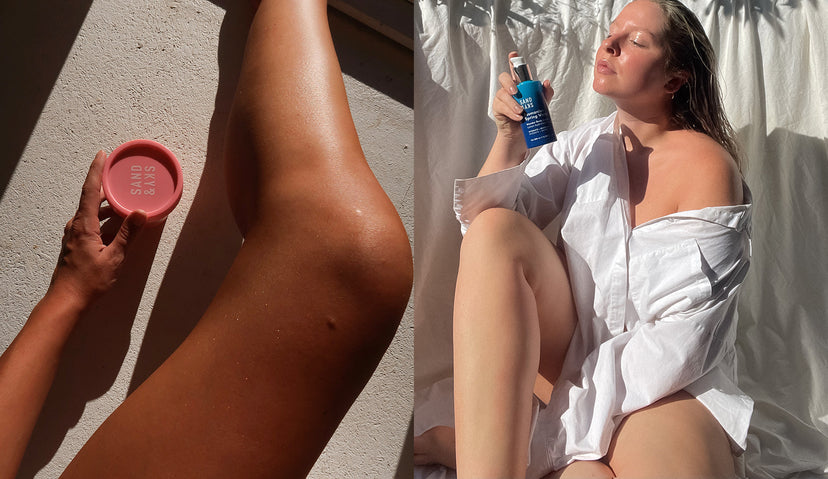What causes ingrown hairs on your legs?
It’s no fun getting an ingrown hair on your leg or anywhere else for that matter. Unsightly, ingrown hairs are those that have grown back into your skin and become inflamed. They’re caused primarily by shaving, waxing, or naturally from a buildup of dead skin and other debris blocking the hair from growing out as it should.
Genetics
If you’re frequently dealing with annoying ingrown hairs, it could be genetically passed down to you! And for people with curly hair, you’re more likely to get ingrown hairs since curly hair tends to not grow straight through the skin. Instead, curly hair will bend and twist back into the skin which leads to those pesky ingrown hairs on your legs and other body parts.
Clogged Pores
Another possible reason why you’d get ingrown leg hair is because your pores are clogged. Because your skin is constantly ridding itself of dead skin, dead skin cells could be getting tapped inside your pores. Dirt and debris can also be making its way into your pores which can also lead to acne and unwanted skin breakouts.
For pesky and painful ingrown hairs, it may be best to consult your doctor or a medical professional about steps for removal. Otherwise, you should be able to take care of ingrown hairs at home with a few simple steps. We’ve listed those out below as well as some worth noting guidelines to keep your legs looking silky smooth and free of ingrown hairs!

Steps for Ingrown Leg Hair Treatment and Removal
To identify if you have an ingrown hair look for the ultimate sign: they appear as a small rounded or raised bump over the follicle, itching, skin darkening, and sensitive to the touch. You likely will be able to see the hair just below the surface of your skin or poking out of the bump slightly. Don't ever pick at ingrown hairs that aren't visible – this could cause infection!
Here's the best way to safely get rid of ingrown hairs!
Step 1: Clean the affected area
Using a washcloth with warm water and a little soap, clean the affected area(s) to begin the ingrown hair removal process. No need to scrub away here, just lightly clean the area to remove any excess dirt and oil from your skin. You can also use a gentle exfoliator such as our Australian Pink Clay Smoothing Body Sand so long as there’s no irritation. Pro tip: rub the body sand slowly in circular motions to prevent irritation.
Step 2: Apply a warm or hot compress
Next, apply a warm or hot compress to your legs where ingrown hairs are located. Saturate your washcloth in warmer or hot water, squeeze out the excess water, and leave the compress over the follicle for a few minutes. This will help open up your pores and can allow the follicle to drain, especially if there’s a little pus or inflammation.
Step 3: Use tweezers
Get some sterilised tweezers and gently pull out the ingrown hair. If the entirety of the hair is visible above the surface of your skin, try to grab it from its base. Pull firmly and carefully in an upward direction until the hair is removed.
Step 4: Wash the area with soap and water
Finally, you should wash the area again with warm water and a little soap, using a hot compress afterward as needed to help reduce any redness or inflammation.

Preventing Ingrown Hairs on Legs
Ingrown leg hair removal may not be the most complicated process in the world, but it’s certainly not the most fun either! Thankfully, there are few things you can do to prevent them in the first place.
In general, the goal is to keep your pores open and clear, which encourages body hair to grow out instead of back into the skin. Ingrown hairs on legs aren’t any different than other ingrown hairs, though they are more common for people who routinely shave or wax their legs. Don’t worry, we’re not telling you to stop shaving! Just do it the right way, and don’t forget to exfoliate and moisturise too. Below are a few tips for preventing ingrown leg hairs.
Shave Your Legs the Right Way
First, you’ll want to make sure you have a good razor. Disposable razors work alright, though throw them away once they start to dull (and to be honest, try to avoid them if you’re especially prone to ingrown hairs). They can also be wasteful, we’d recommend using a high-quality razor to be used longer.
Maybe we’re stating the obvious, but your razor should glide easily over your skin while you shave for a smooth and breezy experience. No cuts, no bumps, no irritation. Look for razors with a skin guard and make sure they’re sharp and clean before each use. Regularly replace your razor blades, and clean them with a little rubbing alcohol when you’re done shaving so they’re good to go for their next use.
Make sure you’re practicing good shaving techniques, too. Shave in the direction of hair growth, rinse your blade after every stroke to keep the blades from clogging, and shave with hot water. Shaving creams or gels with vitamin E, tea tree oil, coconut oil, and other soothing ingredients can also help prevent ingrown leg hairs and promote a smoother shave.
Exfoliate and Moisturise
Preventing ingrown hairs on legs is part of a more comprehensive body care routine for your skin. Exfoliation, moisturisation will not only prevent those pesky ingrown but will leave you with healthier, smoother skin overall. This means finding the right products with ingredients such as aloe vera, macadamia oil, avocado oil, vitamins C and E, hyaluronic acid, and other natural humectants and emollients.
Exfoliate - Regular exfoliation not only helps prevent ingrown hairs but also removes excess dead skin cells, dirt, impurities, sebum, and any product residues from the top layer of your skin. This keeps your pores clean and rejuvenated for a healthy-looking glow and makes shaving a more enjoyable experience. Exfoliate with a body scrub up to three times per week on ingrown-prone areas, depending on your skin type, and be sure to follow with a moisturiser.
Try a 4-in-1 formula like the Australian Pink Clay Smoothing Body Sand, a botanical-based exfoliator designed to tackle dry skin, cellulite, stretch marks, and ingrown hairs to leave your skin soft and glowy after each use!
Moisturise - When it comes to moisturisation, use a nourishing lotion after shaving to keep your skin hydrated and fresh. Regular use of moisturisers will help soothe skin and keep it from getting itchy, dry, or inflamed. Promoting good skin conditions reduces the frequency and possibility of ingrown hairs.
Look for products like the lightly scented Wonder Body Lotion, made with hyaluronic acid, Tasmanian Spring Water, and sea kelp to quench thirsty skin, improve its elasticity, fortify its natural moisture barrier, and provide essential minerals like calcium and magnesium.
For cases of more persistent ingrown leg hairs, you can also try OTC treatments for preventing razor bumps or ingrown hairs, often with ingredients such as benzoyl peroxide and salicylic acid. These can reduce the risk of infection, prevent further ingrown leg hairs, and help coax out any leg hair growing under the skin. These types of products shouldn’t be a substitute for moisturization and exfoliation, but work alongside them to treat ingrowns and maintain healthy skin!
Looking for more rejuvenating skincare tips? Explore the Sand and Sky blog and check out our Instagram to stay up-to-date on the latest trends and deals in sustainably sourced beauty!
Shop our bodycare collection for head-to-toe goddess skin. 💃



